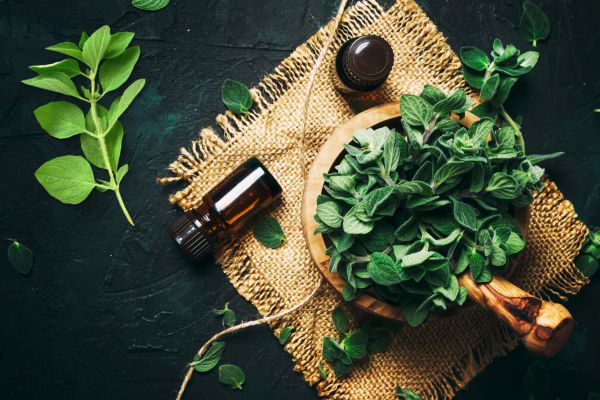

Oregano is more than just a flavorful herb in your kitchen — it is also a source of one of the most powerful essential oils in the world. Oregano oil is valued for its rich concentration of beneficial compounds like carvacrol and thymol, which contribute to its strong aroma and natural properties. Whether you’re a DIY enthusiast or simply curious about how it’s made, this guide will walk you through the different methods of making oregano oil, from traditional infusion to advanced essential oil extraction.
Oregano oil comes in two main forms:
Oregano Essential Oil – A highly concentrated oil made through steam distillation. This contains potent amounts of carvacrol and thymol and is used in very small doses, often diluted in carrier oils.
Oregano Infused Oil – A milder oil created by infusing oregano leaves in a carrier oil like olive oil or black seed oil. This method can be done at home and is less concentrated than the distilled essential oil.
Both forms are valued, but the process of making them is very different.
If you want a safe, natural, and simple way to enjoy the benefits of oregano, infused oil is the easiest to prepare.
Fresh or dried oregano leaves (preferably organic, Origanum vulgare)
A high-quality carrier oil (extra virgin olive oil, black seed oil, jojoba oil, or grapeseed oil)
A clean glass jar with an airtight lid
Strainer or cheesecloth
Dark glass bottle for storage
If using fresh oregano, wash and dry it completely. Any water can cause mold growth, so make sure the leaves are thoroughly dried.
If using dried oregano, lightly crush the leaves to release their natural oils.
Fill your clean glass jar halfway with oregano leaves.
Pour your chosen carrier oil over the leaves until they are fully submerged. Make sure no leaves are sticking out above the oil, as this can lead to spoilage.
Seal the jar tightly.
Place it in a warm, sunny windowsill for about 2 weeks. Shake the jar gently every day to help the infusion process.
Alternatively, you can speed things up by using a double boiler method:
Place the jar (with oregano and oil) in a pot of warm water and gently heat it for 4–6 hours on the lowest setting. This mimics solar infusion but is quicker.
After infusion, strain the oil through cheesecloth or a fine strainer to remove the leaves.
Pour the oregano oil into a dark glass bottle to protect it from light.
Store it in a cool, dry place. Shelf life is typically 6 months to 1 year depending on the carrier oil used.
While oregano-infused oil can easily be made at home, pure oregano essential oil requires a professional process called steam distillation. This is how commercial producers obtain the highly concentrated form of oregano oil.
Harvesting
Fresh oregano plants (especially the leaves and flowering tops) are harvested when carvacrol levels are at their peak.
Preparation
The plant material is chopped or crushed to expose more surface area, which helps release the aromatic compounds.
Steam Distillation
Steam passes through the oregano plant material.
The heat causes the tiny oil glands in the plant to burst, releasing essential oils.
The steam and oil vapor then travel through a cooling system, condensing back into liquid.
Separation
Since oil and water don’t mix, the essential oil floats on top of the distilled water.
The oil is carefully separated and bottled.
Final Product
This results in a highly concentrated oregano essential oil, which must always be diluted before topical or internal use.
Choose the right oregano species: True oregano (Origanum vulgare) has the highest carvacrol levels. Other varieties may be less potent.
Use high-quality carrier oils: Extra virgin olive oil is traditional, but black seed oil adds its own beneficial compounds like thymoquinone.
Avoid contamination: Make sure all jars, bottles, and utensils are sterilized to prevent mold or bacteria growth.
Store properly: Always use dark bottles and keep the oil away from direct sunlight and heat.
Topical Use: Apply diluted oregano oil to the skin (always mix with a carrier oil).
Aromatic Use: Add to a diffuser for a refreshing herbal aroma.
Culinary Use: Small amounts of infused oregano oil can be drizzled on salads, bread, or pasta. (Note: Essential oil is too concentrated for this—only use infused oil in food.)
Oregano essential oil is extremely concentrated and can cause irritation if not diluted.
Do not apply undiluted oregano essential oil directly to skin.
Pregnant or nursing women and people on medication should consult a doctor before using oregano oil.
Always perform a patch test before applying topically.
Learning how to make oregano oil gives you a natural way to capture the essence of this powerful herb. While essential oregano oil requires specialized equipment, infused oregano oil can easily be made at home with just oregano leaves and a carrier oil. By following proper preparation and storage methods, you can enjoy the aroma, flavor, and natural qualities of oregano oil for months to come.
Share:
Can I Take Black Seed Oil and Oregano Oil Together?
Oregano Oil with Olive Oil: Benefits, Uses & How to Make It